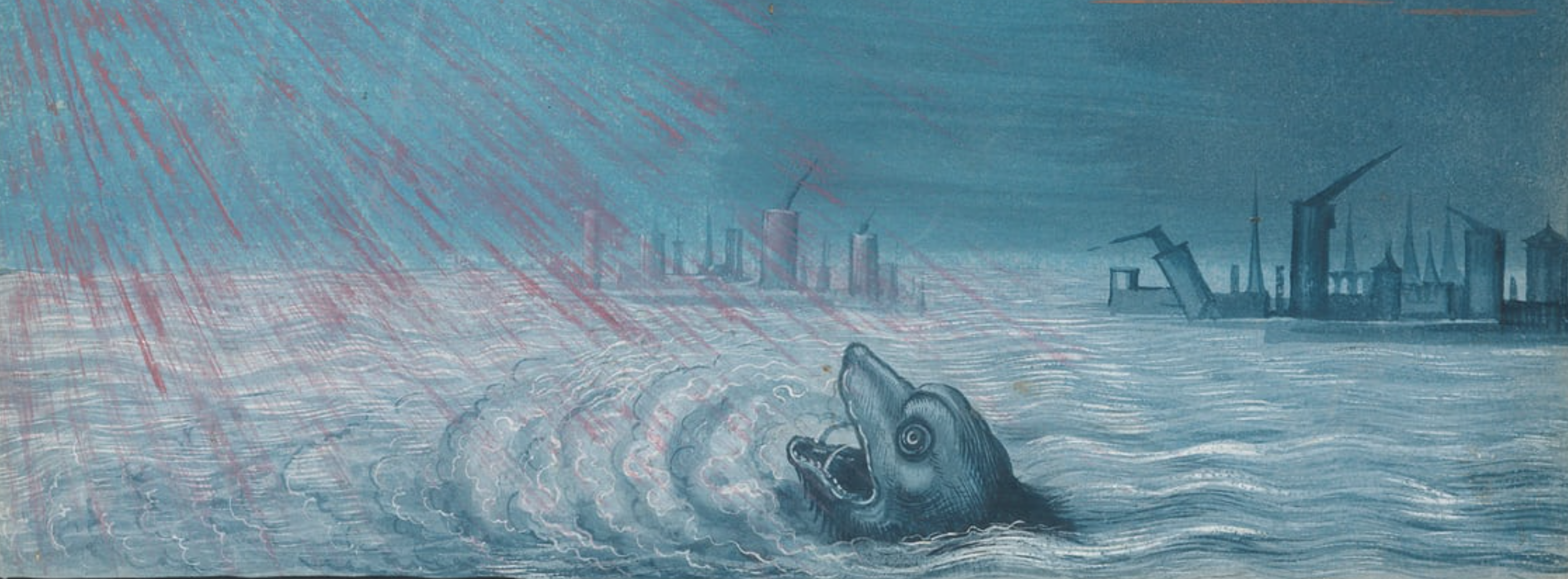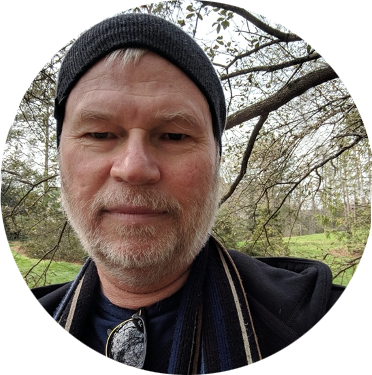“To tell the antecedents, know the present, and foretell the future”
– Hippocrates on the art of the physician, Of the Epidemics (c. 430)
I. Crisis Comes Home
This collection started inauspiciously. It grows out of a conference, organized by the two of us, and held at King’s College London. It opened on Saturday, May 8, 2015, the day after the general election in the United Kingdom. Opinion polls had forecast a hung Parliament, or perhaps a slim majority for Labour. But, and not for the last time, the outcome defied expectations. In the polling booths, “shy Tories” picked up the stubby blunt pencils (with strings attached) which the electoral officials provide, and they put their Xs down for David Cameron’s Conservatives, giving them 331 seats and an outright majority for the first time in 23 years. Overnight, it was game on for the Brexit referendum; there would be no let-up in the UK from ideologically driven austerity for the poor and tax breaks for the wealthy; the marketisation of the universities would gather pace. The conference title we had chosen, “Early Modern Studies and Political Criticism Today,” had been intended to focus our collective thoughts on the present moment and the possibilities it might offer for a renewed critique of its structures of thought—but the word “crisis,” you may notice, was not in the title. We considered it, but at the time it would have felt like overreach, a terminological bridge too far. “Crisis” implies, almost definitionally, that the usual means of solving problems are no longer adequate to the moment.[1] We, on the other hand, would be considering how early modern studies might become more adequate to the demands of their moment. Interventions in the field of early modern literary studies could still be made, we’d say, and these in turn might even lead to larger, more efficacious interventions into “politics” itself. But as the first panel began, at nine in the morning on the eighth of May, we began to suspect that perhaps “Crisis” should have been in the title alongside “Today” after all. The “CRISES” we were gathered to discuss might once have seemed manageable, even abstract, but now they were concretely present in a tiered lecture-theatre on the Strand, legible in the shellshocked faces of the conference goers. “There we were,” as Timothy Morton puts in another (but not different) context, “trolling along in the age of industry, capitalism, and technology, and all of a sudden we received information from aliens, information that even the most hardheaded could not ignore, because the form in which the information was delivered was precisely in the instrumental and mathematical formulas of modernity.” Substitute “Tory voters” for “aliens” and specify “exit polls” as the “instrumental and mathematical formulas of modernity” and you have our situation exactly. What were we doing, one of us remembers thinking,
deep diving into early modernity in a time of overlapping catastrophes? What were we doing, reading our early printed books and fossicking about in our temperature-controlled library stacks and carbon-emitting digital archives in a world of runaway global heating? What were we up to, rescuing 400-years’ dead witches and ink-makers from oblivion while migrants fleeing a majority world stalked by war and a crisis of habitability drowned in the Mediterranean and the Rio Grande? What were so many good people doing, communing with the past while populists lit the touchpaper on racism and xenophobia, ecosystems collapsed, and non-human life on earth declined precipitously?
– Patricia Palmer
So, when we say that early modern criticism currently finds itself in a time of crisis, we mean that it is caught up, just as we were that morning, in events threatening to undermine criticism’s always provisional, already fragile tenets, and that it has not yet learned how to orient itself, just as we had not. (For Morton, SARS-CoV-2 is “the ultimate hyperobject . . . The hyperobject of our age. It’s literally inside us.”) In this volume, the informing sense of crisis has less to do with the decisive moment, the pivot, immediately apprehended, around which events turn—than with the crisis that emerges because it has been there all along. This, of course, is what we realized on May 8, 2015: not that things had abruptly changed, but that they had been otherwise for a while, though nothing like as visibly. The election of 2015 was a the first of several “being-quake[s]”[2], as Morton calls them, that would trouble the equanimity of the conferencegoers (and, most likely, the readers of this volume) in the half-decade to come. The next year, UK citizens would vote to leave the European Union by a margin of 52% to 48%. In that same year, Donald Trump, having received 2.87 million fewer votes than Hillary Clinton, would be installed in the White House. Towards the end of 2019, a new plague would arrive. In 2020, by the time this volume went into production, crisis sat with us all, incarnated as SARS-CoV-2. Then, in 2021, as we began our introduction, this happened:
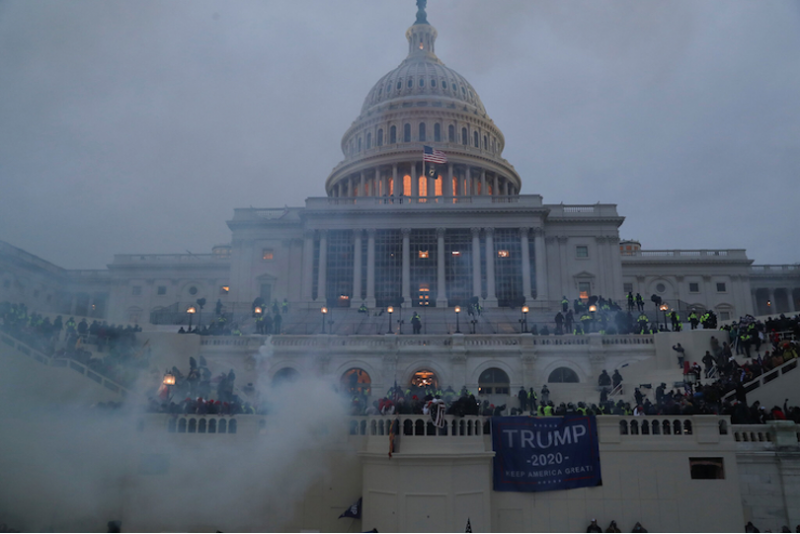
What all of these events have in common, besides their devastating real-world consequences, is the pressure that they put on ways of making sense of the world that, for many of us, had seemed sustainable until then. It’s not that we hadn’t known that there were other actors at work—political parties, demagogues, viruses—but that we had thought we understood the distribution of these actors and their relative potencies.
Donald Trump was not going to win. But then he did. Viruses stayed “somewhere else.” Until one didn’t. The cops at the Capitol would have “everything under control . . . they were on top of everything.” Until “They weren’t.”[3] Paradoxically, some of the shock of such events comes from realizing how well one’s understanding applies after all. How many of us have not entertained the suspicion that a virulent politics would eventuate from the many brutalities of, in Morton’s words, our “age of industry, capitalism, and technology”? Or have believed that this politics is nothing entirely new, but the upshot of centuries of, precisely, the “industry, capitalism, and technology” of prior ages? Enough of us that applying the term “crisis” to our present circumstances might seem, in itself, a form of disavowal. As Willy Maley points out in his contribution to this volume, the word is sometimes “invoked . . . to create an atmosphere of crisis, when, in fact, capitalism is permanently in crisis, colonialism is permanently in crisis.”[4] To say that we are “in crisis” now is to mistake how bad things have been all along.
Maley is partly right. “Crisis” has a long conceptual lineage, and the term is often applied indiscriminately. Reinhardt Koselleck, the historian most responsible for the genealogy we have,[5] tells us that crisis has been a cutting-edge concept for some time, but that it hasn’t always cut in the same directions. For the Greeks, he notes, κρῐ́σῐς was an operative term in law, theology and medicine, and in each it implied a cleavage: this or that. (κρῐ́σῐς derives from κρῑ́νω [to decide, distinguish, discern, judge], and, as is often noted, has a cognate in κριτικός—critique.) In its medical usage, the split was particularly sharp: life or death. A crisis was that “point in the progress of a disease when an important development or change takes place which is decisive of recovery or death; the turning-point of a disease for better or for worse”[6] (a pathological definition that seems especially apposite just now).[7] And they distinguished between a “perfect” crisis, which led to fully restored health, and an “imperfect crisis,” which “left open the possibility of a relapse.” This therapeutic sense, originating with the Hippocratic Corpus in the fifth century BC, “remained dominant virtually without interruption” for over a millennium—until, in fact, the seventeenth century, when its reach began to expand. The “metaphorical flexibility” of the concept was an invitation to distribute its explanatory power widely. More and more, the “medical concept of crisis was applied to the ‘body politic’ or its constituent parts,” and, beyond that, to “economics, history, [and] psychology” as well. And so, says Koselleck, the concept dulled at the edges. A crisis, “which once had the power to pose unavoidable, harsh and non-negotiable alternatives, [was] transformed to fit the uncertainties of whatever might be favored at a given moment.” Some three hundred years later, “there is virtually no area of life that has not been examined and interpreted through this concept with its inherent demand of decisions and choices.”[8] This is synoptic, but salutary: one of those “areas of life,” early modern literary studies, is our own, and invoking the term “crisis” is just what we are doing in the title to this volume. It’s good to be reminded that the meaning of “crisis” is not fixed. It has a rhetorical capaciousness that allows it to be taken up and reshaped to fit all manner of exigencies. And it was in our own period, the early modern, that these adaptations first began. If the Renaissance was not the protracted crisis that some have made of it,[9] it was nonetheless the incubator of the crisis-thinking that we call our own—the notions, in fact, that we found ourselves invoking on that morning in 2015.
Still, there remains something to be explained here, something that goes beyond crisis-as-usual: the specific shock to our systems that these events represented, the systems by which, in the midst of the cascading tragedies of our day, we had learned to calibrate the degree of perturbation we were likely to endure. After the 2015 election in the UK (or any of its successor disasters), the recognition that the world was, after all, just what you thought it was came with an epistemic twin: the realization that it was not like that, not at all, or perhaps that it was even more so than anticipated. What was once unthinkable—even David Cameron thought Brexit would be a bad idea —must now be thought. And it wasn’t, and isn’t, entirely clear that the explanatory systems in place, even those that provide us with terms such as “capitalism” or “colonialism,” were, or are, up to the task. In fact, given their effective parameters, probably not.[10] If they were, would we have been as appalled and baffled as we were on May 8, 2015?[11] Or would you have felt as you did when you first heard the words, “President Donald Trump”?
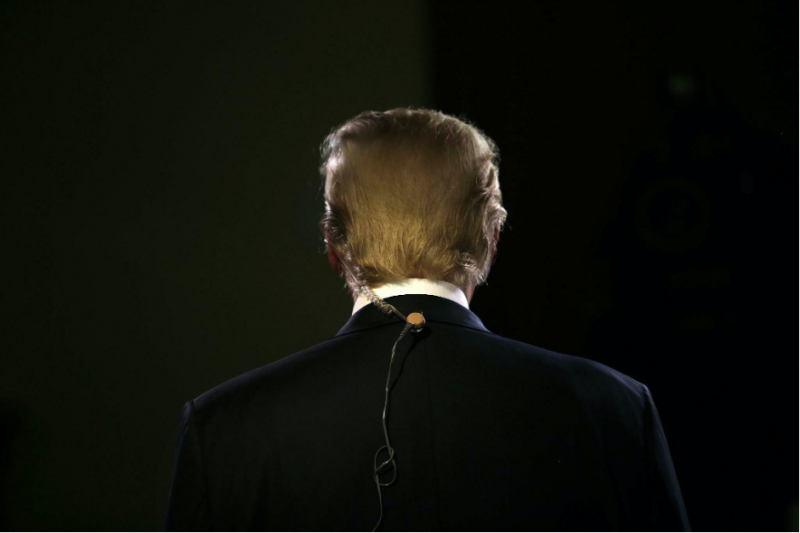
The transubstantiation of crisis from an abstraction to real presence, immanent in all our lives, has continued to ghost this volume. To say that crisis is real, however, is not to say that it can be easily grasped. That’s just the difficulty, or much of it. What’s happening now, for all of us, is that very large realities are shouldering their way into view, while simultaneously obscuring that view. For instance, many—maybe all—of the horrors we registered at our conference could be traced, by a series of causal relays, back to global heating, the meta-catastrophe of our times. (This may be true of the advent of SARS-CoV-2, as well.[12]) Global heating, though, is among those prodigies that, in 2013, Morton, a proponent of “object-oriented ontology,” called “hyperobjects”: “nonhuman entities . . . that are incomparably more vast and powerful than we are,” that we find impinging on every aspect of our existence. And was precisely his point about such entities that they exceed and disrupt our ability to know them; they demolish the schemata that we would like to apply, “tear[ing] through . . . the maps we make,” as he put it.[13] Seven years later, it might seem like a little much to ask that early modern studies confront a crisis of such proportions that, often, our understanding crashes before it. (Although, in fact, there are those within early modern studies who do make this attempt.[14]) But the future is too much with us, late and soon. As we realize, more and more, that “the end of the world is already happening,” or perhaps that it “might already have taken place,”[15] our standard disciplinary strategy of discounting the future—and, indeed, the present—in favor of the early modern past will become less and less sustainable. Today’s and tomorrow’s early modern scholars, just by virtue of their place in history, will have to work out the complexities of their temporal spacing. Rubrics such as “historicist” or “presentist”[16] (or “futurist”?) will be of some help, but not much.[17] As we did at that conference in 2015, they will have to ask: what does the job of excavating the early modern past now have to do with what’s here, with what’s coming? Is this the end of the world as we know it (and, if so, did we really know it)? Such questions boil down to one: what was it to be an early modernist amid the convulsions of endgame, last-days modernity, living and working on long-dead letters while knowing what we think we know? Thus the crisis of the early modernists.
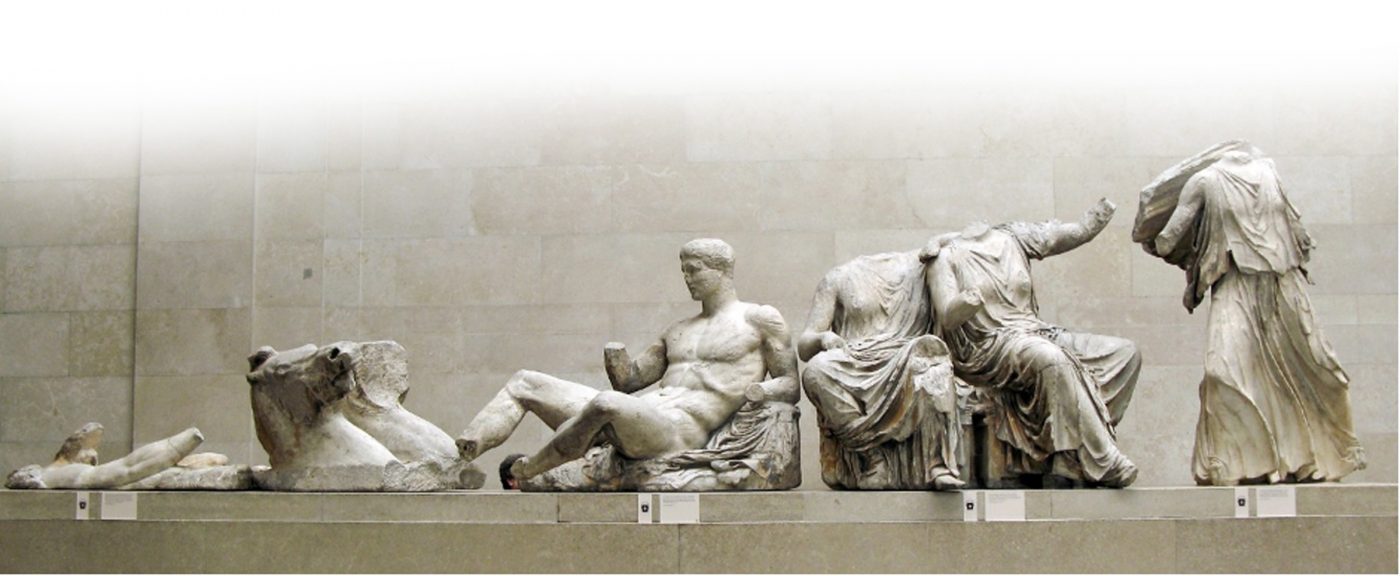
Here, then, we are not so much interested in the ontology of our present crisis—that is not a case we feel we need to make—as in the epistemology of it. We’re facing a crisis of knowing just at the time when we need desperately to know. And we’re suggesting, somewhat perversely, that the problems of crisis-epistemology might, in and of themselves, be useful for early modernists.
Let’s approach this possibility through our own experience of crisis as humanists. We are familiar with the claim that our discipline is “in crisis.” Over the last few decades, there’s been a certain syncopated rhythm to these claims: “the humanities are in crisis!” gives way to “no, not really,”[18] or to “yes, but not to worry, the humanities have always been in crisis,”[19] and then, with a sickening lurch, to “no, this time they really are in crisis,”[20] before cycling through again. That is to say, we know what it’s like to be caught up in a sea of troubles, a crisis by any other name, and yet not know just what name to call it. It’s not that the various catastrophes that obtrude on us aren’t real or immediately consequential, but that the turmoil extends to our understanding of them as well. Is it a crisis that we are confronting, or several bundled under that term, or what exactly? Is this crisis episodic or cyclical, or is it an persisting state of affairs? Being in crisis means being twisted up in an intricate knot of epistemological problems, so much so that it can seem that “the only way to work in the humanities is to be continuously attuned to the question of what the humanities do and are,”[21] crisis, that is, as a permanently (dis/en)abling condition.
Now, there are several larger ways, we’ve noticed, to deal this predicament. We can take them, or some of them, in order of increasing cogency and sophistication. The first has been adopted, as we say, by many, though by no means all, early modernists: rejecting the present implications of our crisis in favour of a hermeneutic of suspicion towards anything other than the bygone past, denial as a mode of history. One reason that early modern studies have proved unable to respond meaningfully to the epistemic complexity of our moment, we argue, is that it has a restricted sense of its own temporality, its own being-in-time. Early modern studies make up an historical discipline (well, its periodization is right there in the name). But it’s an historical discipline without a coherent historiography (or sometimes, for that matter, much coherent disciplinarity). Its sense of the past, of the early modern, and of the relation of that past to the contested present, and of the trajectories the discipline might take in the future, is severely undertheorized—as we used to say, back when that was a bad thing. As one of us asks:
“Isn’t this penchant for the dernier cri part of the problem? We expect waves of criticism to crest and vanish, leaving the litter of their vocabularies behind them, if not much else, but the larger changes they promise so rarely materialize, or else become pervasive so quickly that they are hardly noticed amid all that has not changed.”
– David J. Baker
Today, truth be told, the studies that call themselves “early modern” operate mostly according to an unreconstructed historicism that is more old than new. Think of what most of us have been doing: burrowing into the archives, editing and re-editing the canonical stalwarts, exhuming the discourses of the undead past, restoring the “materiality” of early modern texts and objects. Our work has been backward facing, innocent, or so we sometimes claim to believe, of any hint of so-called presentism. It might be more accurate to say, perhaps, that the present, our own time of crisis, is the excluded term in our scholarship. There would be something reassuring about this fidelity to disciplinary imperatives that are little changed since the late nineteenth century if we were not, in fact, living in the early twenty-first.[22] We can’t see many advantages to such an approach.
These claims might seem sweeping, but there is another approach more sweeping still: acknowledge the crisis fully, and then declare that it simply rules the conundrums of the humanities out of court, since they have no actual consequences, and consequential intervention is what we need right now. In a bracing critique, Steven Connor has argued that the crisis of global heating obviates whatever contribution to the general good we may have thought the humanities were making. They, and “English in particular,” have “succeeded very well in defining themselves as a form of attention that is itself the answer to every problem that may be encountered.” The problem of global devastation,[23] though, is “not one of how we understand what we are; it is a problem of what we decide to do, or do without deciding. It is a technical and not an epistemological question.” Perhaps, he speculates, in what’s to come there may be a “public relations role for the humanities, in softening people up, or toughening them up, for the kind of world it looks as though we will need to bring about or put up with.” But, even so, we will all have to “live by numbers, watching emission levels going up more or less quickly as one watches the taxi meter.” “The humanities will be able to join the epistemological game only at the cost of the principle that has sustained them”: “mistaking epistemology for effect . . one of [our] most common . . . dream machines.”[24] We sympathize with this critique, although it goes further in its pessimism than we’d like to follow, and although it offers more of an epistemic blunt instrument than we’d like to take up. Part of our frustration with early modern studies is how little we are doing to orient ourselves towards the future we know is coming. And implicit in our heightened sense of having been jogged by the pandemic into crisis mode is an imperative that we don’t mistake knowledge for solutions. Knowing how coal-burning affected early modern London,[25] say, is fine, but knowing how to get out of this planetary fix is what we urgently need.
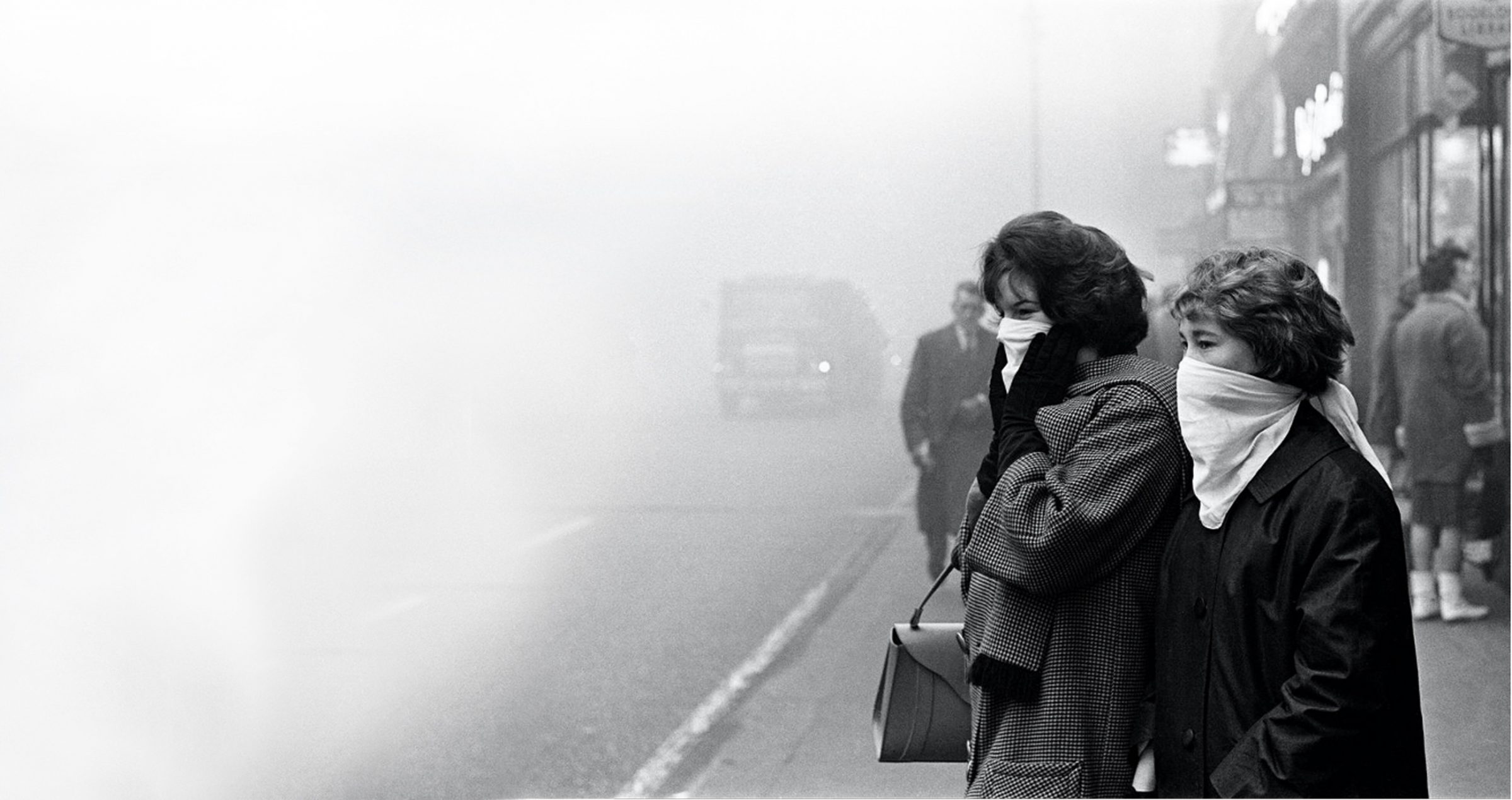
A third approach is more subtle, though just as extensive in its implications: allow for the existence of the crisis, but rule the concept of crisis out of court, at least partially. If “crisis” is a term of art, some have been wondering recently if we could do without it. Insisting that her “point is not that a crisis is false or merely a constructed basis for narration,”[26] Janet Roitman asks us to consider, at the same time, “suspending crisis . . . as the foundation of narration and critique.”[27] Why, she queries, “should crisis, as a category, be so self-evident?” Today, as we’ve seen, “[t]he very idea of crisis as a condition suggests an ongoing state of affairs.” But, she counters, “can one speak of a state of enduring crisis? Is that not an oxymoron?” And, for that matter, why have the “grounds for critique [become] the defining problem of epistemology,” while the grounds for its cognate, crisis, go mostly unexplored? We should consider, rather, the “kinds of work the term . . . is or is not doing.”[28] Roitman therefore adopts, and wants us to adopt, an agnosticism towards crisis. Crisis, she says, is not so much an object of knowledge as a distortion in the field of knowledge: a “blind spot,” “a point of view, or an observation, which is itself not viewed or observed,” but which thereby enables and “engenders certain forms of critique” and, potentially, a “politics of crisis,”[29] though not one she means to investigate: “An anti-crisis activism is to be made by others.”[30] All that we can know of crisis, if there is anything to know, are its effects, and since this includes “our very accession to [the] judgment” that we are actually in a state of crisis, it behoves us to think carefully before we invoke the term.[31] We recognize the clarifying rigor of these claims as well. Certainly, we value the humanities’ ways of knowing,[32] but we have no wish to add yet another unexamined term to their lexicon. Crisis should not be avoided, but neither should it be taken as a brutally self-evident reality or an a priori given. Crisis is both a real problem (or problems) and, as a concept, a way to grapple with such a problem (or problems).
In fact, we would argue that this is just what a crisis “is”: a coming together of pressing exigencies that announce themselves in a way that brooks no ambiguity and ambiguity about how to receive that announcement. Here, we take our cue from Koselleck. He acknowledges that now the “concept of crisis” tends towards “imprecision and vagueness,” but this, he says, “may itself be viewed as the symptom of a historical crisis that cannot as yet be fully gauged. This makes it all the more important for scholars to weigh the concept carefully before adopting it in their own terminology.”[33] Note that he does not say that this concept or the term itself should be purged. Rather, he says that due care should be taken precisely because the concept and the term do apply—there is indeed an “historical crisis”—but, as a possible consequence of that crisis, both concept and term are themselves in crisis: they may attach themselves in a general way to the situation but get blurry when mapped to its specifics. And the work of the scholar is to stay there, in that place of conceptual indeterminacy, fitting concepts to emergent realities as best she may, employing terms as placeholders for meanings that will emerge along with those still occulted realities. Or, to put this another way, “One asks about the limits of ways of knowing,” Judith Butler said in 2002, “because one has already run up against a crisis within the epistemological field in which one lives.” Roitman has pointed that, in defining crisis as she does—a “tear in the fabric of our epistemological web”[34]—Butler runs the risk of tautology.[35] You become aware that “no discourse is adequate here or that our reigning discourses have produced an impasse.”[36] That is, a recognition of crisis—“no discourse is adequate here”—generates an “impasse,” a crisis by any other name. You ask about crisis because you are in crisis. But, as we’ve been arguing here, this circularity is built into the crisis-moment: the failure of the term “crisis” fully to seize upon the present calamity, whatever that may be, can itself be a sign that crisis is upon us. “[W]hat is the burden of proof for such judgments?,” Roitman asks repeatedly. What can we know of crisis when crisis itself, as a concept, serves as the unthought that “allows certain questions to be asked while others are foreclosed”? But she is missing a subtlety here. Determining the burden of proof for judgments that cannot be fully proved is just what crisis-thinking demands, and while crisis may serve for some as the “unthought,” it is just our point that the scholar should nevertheless think it. Such thought is necessarily self-referential, but that does not rule out its referentiality as such; it is a hermeneutic in search of an object of knowledge that it cannot help but posit. “Ultimately,” says Roitman, “I invite the reader to put less faith in crisis.”[37] Reader, keep the faith. To paraphrase Leon Trotsky, you may not be interested in crisis, but crisis is interested in you.
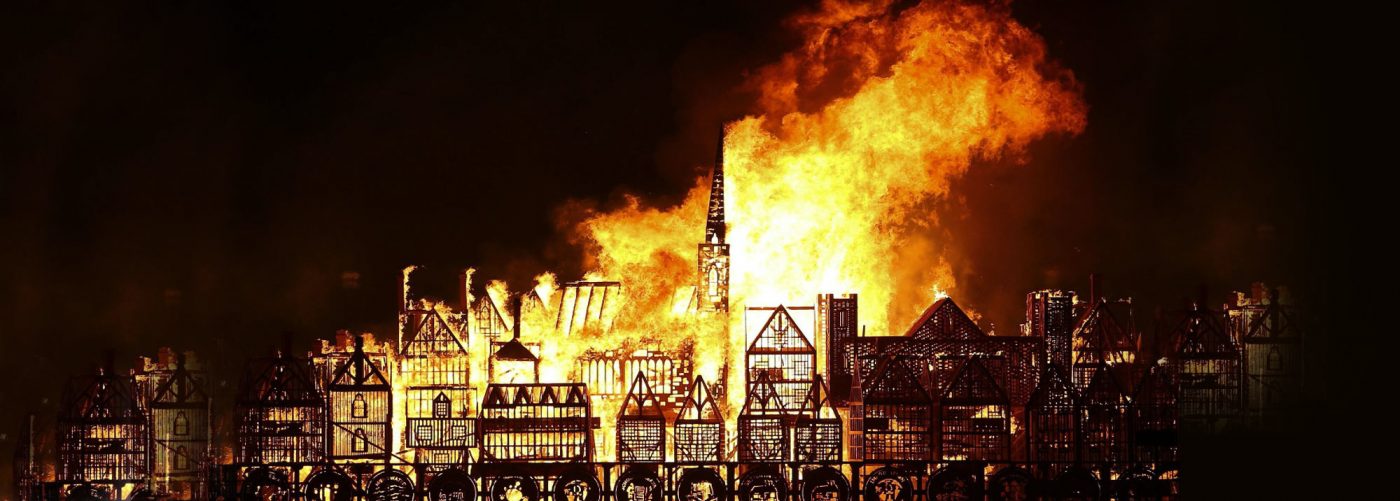
That is the posture that we urge on early modernists, too. Roitman calls crisis a “blind spot,” but intellectual work can be done there. Moreover, we think that early modernists are particularly suited for such employments. As we’ve seen, the exfoliations of the crisis-concept are, in a way, our métier. It was in the seventeenth century that the term took on the far-reaching connotations that it has today. But, more than that, early modern literary critics are, or should be, more than comfortable with the claim that the world has exceeded our capacity to know it, while at the same time demanding that we do so. As many have argued, this description applies to the Renaissance as well. That the period is the hinge around which modernity turns is one of the staples of early modern scholarship, and the epistemic consequences have been well vetted. To take just one especially pertinent example, Katherine Eggert has recently claimed that the “knowledge practices of the late sixteenth and seventeenth centuries . . . found themselves in . . . a long-standing crisis”; for that reason, mental “gyrations” were required of their practitioners. As humanism in particular became “less and less credible,” “England’s learned classes . . . acknowledged and articulated its problems but at the same time continued to employ it as if there were nothing problematic about it.” (She calls these contortions “disknowledge”: strategies by which “epistemological risk” is managed.) In an aside, Eggert remarks that the twenty-first century, too, is “in an age of disknowledge redux,” “at least in the United States.” The question for early modernists now is how willing we are to tolerate this comparison and to think through what it implies. Events such as Brexit suggest that this age does not stop at the U. S. borders. And the catastrophes of our day have definitely outstripped what counts as “humanism” for us. Yet, like our humanist predecessors, we continue to profess our “text-based learning system”[38] as if we didn’t sense its obsolescence. But then come moments like to one that descended that morning in 2015, and, suddenly, that becomes much harder to do.
And, for us, it still is. But, in the intervening five years, we’ve come to realize that moments like this have their epistemic uses, too. The disjunctions of our own brand of “disknowledge” might even help us to address the climate-driven crisis that engulfs us. In response to Connor, who dismisses the humanities’ truth gambits as mere epistemology, we would argue that, though these ways of knowing may not move the dial when it comes to carbon emissions, there is nonetheless a part for them to play, though perhaps a minor one. This is not to mistake epistemology for effect. It is rather to propose that an awareness of the conceptual history of crisis, and an understanding of the epistemic quandaries it entails, could have effects of their own: they may not drive down the mercury in the thermometer, but they might sharpen minds and give point to the warning that each degree of warming so insistently gives us. As those degrees mount, the “problem of human involvement in nature,” Connor allows, “will need to become ever more prominent and unignorable.”[39] Wait . . . ignorance? And ignorance effects? And ignorance’s twinned relation to knowledge? These are just what humanists have the tools to analyse,[40] and, as Eggert shows, early modernists not least among them. Here’s one intervention we might make: we could strive to restore to the word “crisis” its original spectrum of meaning. In classical Greek, Koselleck says, the term signified “not only ‘divorce’ and ‘quarrel,’ but also ‘decision’ in the sense of reaching a crucial point that would tip the scales.”[41] It augured choices, you will recall, that would be “unavoidable, harsh and non-negotiable.” This is the decisive point we have reached today, though our many quarrels are keeping us from doing much about it. But maybe, just maybe, there is still a moment of imperfect crisis to be found.
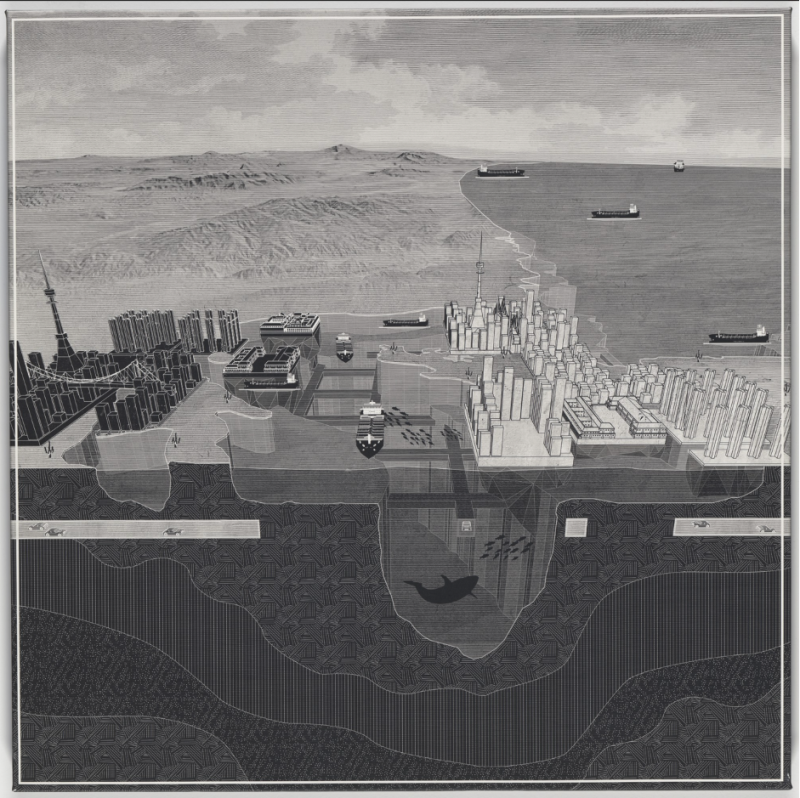
II. Shock and Awe
In the spring of 2020, when the first wave of the coronavirus pandemic rolled over us, we realized that the “impossible [has] happened, our world has stopped.”[42] And, because ‘our world stopped, something else happened: the past surged back in. Birdsong returned. Traffic fell back to 1970s’ levels.[43] The contrails streaming across the skies like pennants of globalisation dissolved, and an older, unsullied blue returned. Like a storm exposing a sunken prehistoric forest and casting it onto the exposed shore of our present, the pandemic re-established a continuum of experience that made Boccaccio, Shakespeare, and Defoe our contemporaries in the déjà-vu temporality of our plague year(s). The past, it turned out, had only been out of sight. One of the astonishments of our viral present is the way it re-exposes us to states we thought were definitively in the past, gone for good. What was, until only the other day, the otherness of the past (imagine! Shakespeare wrote King Lear during a pandemic!) is now the locked-down mundanity of our moment-to-moment of writing for this introduction.
Disaster capitalists, we know, never waste a good crisis; they respond to shock with “shock therapy.”[44] Early modernists, we think, should follow suit. As we’ve been arguing, this moment of crisis has exposed the limits of the stalled-out historiography on which our discipline depends, but in its forced convergences of past and present it has highlighted opportunities, too. What else might we bring to the party?
What is it that, thanks to this crisis, we can see? That the non-early modernist others, perhaps, cannot (or will not)? Just what’s now in front of us: the past that we have known to be there all along. The shocked early modernist, surveying the scene after the storm, sees exposed and disrupted strata, the sediment of other times brought unexpectedly to the surface. If much has been swept away, much has also been brought back into sight. In its iconography and deep structures, the storming of the Capitol in 2021 brings back the American civil war (1861-1865) and the arrival of slaves in Virginia (1619). Brexit brings back not just the partition of Ireland (1922) but the Ulster plantation (1610s) and the break with Rome (1533). Everywhere, what seemed past was, it turns out, only prologue. History is back with a vengeance. And, as the settlements of the past become unsettled again, things long and conveniently forgotten hove back into view. As was foretold. The seventeenth century, Bruno Latour claims, saw the invention of a “a fabulously useful ploy” by which the so-called “moderns” “establish[ed] a political epistemology.” It allowed them to “decide who will be allowed to talk about what, and what types of beings will remain silent.”[45] (Latour calls this the “Modern Constitution.”) Henceforth, it was asserted, “Nature” would be one thing, “Society” something entirely else. But today, says Latour, the interlocking crises of the present have blown this “constitution” out of the water, and it has become clear that its tendentious certainties and exclusions have never truly pertained. Pace those who wanted to see the Renaissance as the midwife of modernity, he famously declares: “No one has ever been modern. Modernity has never begun. There has never been a modern world.”[46] And he said that in 1993! If, today, so many crises later, we feel ourselves to be “actually closer to the sixteenth century than to the twentieth century,” and if now “we seem to experience a sense of familiarity with the times before [the] invention” of this “’epistemological break’,”[47] that is because nature and society are manifestly fused, brought back together by a pandemic that ranges back and forth across the Nature/Society divide. Time to call in the early modernists.
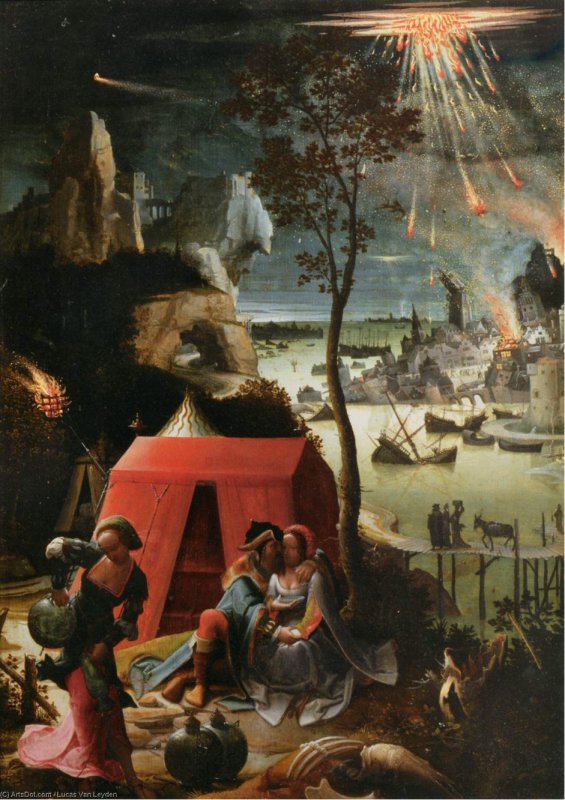
What is at stake here is not just the translation of the past’s otherness into sameness and unexpected familiarity. Yes, there is, for us, a revelation in being fast-backwarded from our mechanical, pre-pandemic glosses on the closure of the theatres when lecturing (face-to-face!) on Venus and Adonis[48] to knowing exactly what that means as we watched our own playhouses (and so much else) go dark.[49] But how much more revitalising would it be if we were to allow that sense of astonished recognition to reset our receptiveness to the strangeness – and not just to the familiarity – of the past? Such wonderment allows us to see the past neither as analogous to our present nor as an absolute alterity. It gives us a chance us to engage with early modernity neither through the à-la-carte analogy-hunting of presentism, nor by approaching it as something that is conclusively over, an arcanum to be handled as a treasure or fetish. This strange time, where so much of the known world has been stripped away, gives us a chance to see the things that have fallen out of history.
And what might emerge is that strangest thing of all: literature. Perhaps, in these shocking times, we should no longer be embarrassed by its power to shock. It is, after all, the raison d’être of our discipline, and yet there is something in the method of even politically alert criticism that militates against its strangeness. All too often, we go to early modern texts in search of analogues, origins, or warnings that speak to a future that has become our present. This skews our attention, of course, towards what happened rather than what didn’t happen, but could have happened, or happened otherwise. We seem to think of ourselves as utilitarian reformers, seeking explanations for what is already (often dismayingly) familiar rather than allowing ourselves to be carried away to the places that we don’t know we could be taken—and this even though it is the otherness of the past that can expose most electrifyingly the contingency (and therefore the alterability) of the present settlement. It is to the recognisable rather than the strange that we are drawn, to the fact rather than the fiction.[50] The problem with treating literature as yet another documentary artifact, though, is that we recover not an enlivening strangeness from the past, but a dusty confirmation of its (usually merciful) pastness. This is not a call for returning to a New Critical absorption in the aesthetic, but rather for seeing where the “disenchantment of the world” has brought us, and for recognising that the sources of re-enchantment lie not just in the natural world, but in the aesthetic, including literary forms and orientations to the world that were cast aside by the very forces which still continue to deprive us of their insights.[51] The challenge, of course, is how to set the past travelling into the present with all of its challenging strangeness intact.
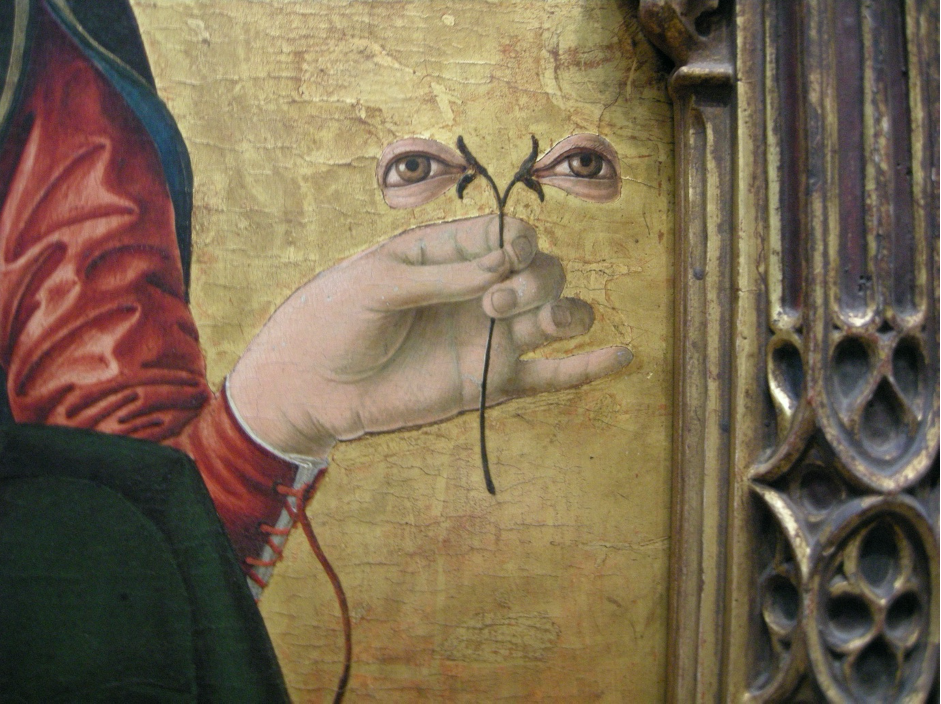
In “Postscript,” a poem that now reads both as a valediction and an injunction, Seamus Heaney enjoins us to:
some time make the time to drive out west
Into County Clare, along the Flaggy Shore,
and leave ourselves open to wonder and strangeness, until
You are neither here nor there,
A hurry through which known and strange things pass
As big soft buffetings come at the car sideways
And catch the heart off guard and blow it open.[52]
For us early modernists, the early modern past is our “flaggy shore,” and we, its keenest visitants, buffeted not only by the storms of the present but the alterity of the past, are both receptors and vectors through which “known and strange things pass.” In a strange and estranging world, we all need – and are being forced – to see everything differently. Given that the present has been “blow[n] open,” the challenge for us as early modernists, revisiting the past in full awareness of that reality, is to see how its strangeness, in turn, can suddenly seem more recognizable and more open-ended.
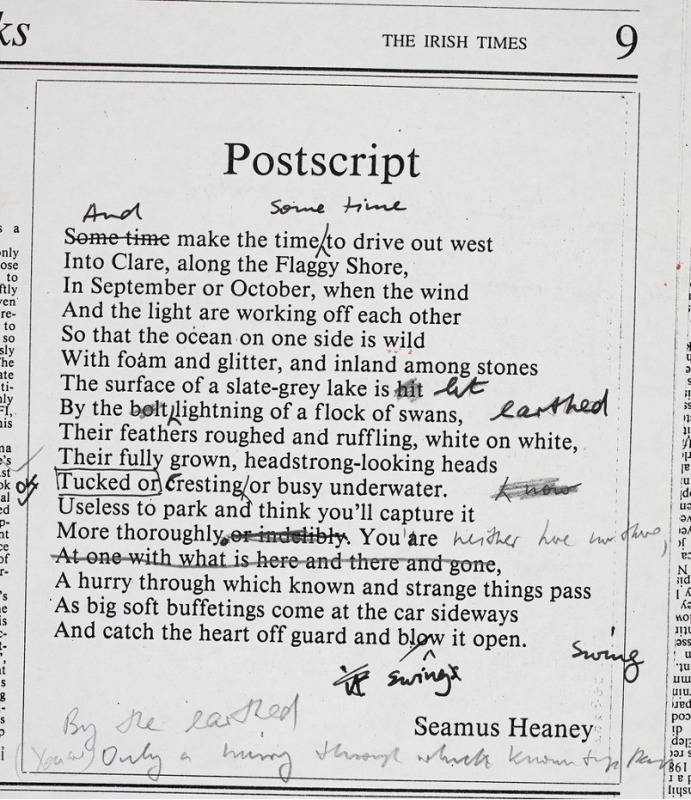
This can be a place to end, though it isn’t; our introduction, too, is open-ended. In the “Coda” to this volume, one of us, Palmer, returns to conduct an experiment in using the “strangeness” of literature – this time with a poem by a bardic predecessor of Heaney’s, Laoiseach Mac an Bhaird – to confront the “unthought” with a long-forgotten kind of thinking. But a brief word on our contributors. The essays that follow were written during, and buffeted by, successive manifestations of crisis, and they themselves register its evolution and its disruption. Some of us pivoted to Shakespeare, as so often in times of crisis, to reflect on the events that were disrupting our lives—Brexit, the election of Donald Trump—and to unpack their implications for early modern literary studies. We’ve grouped these essays together under the rubric “Shakespeare in Crisis.” Some of us took up specific questions in early modern criticism: ballads and how to construe their politics, for instance, and how to reintroduce “class” as a term in our lexicon. These essays make up a section titled “Early Modern Studies in Crisis.” And some were compelled to respond formally as well as thematically to the challenge of writing amid the bleached bones of the critical discourses by which we once lived. These contributors found that their route to exploring the political was through the personal, and so the essays in “Critics in Crisis” are more confessional in tone than is usual either for their authors or the academic essay as a genre. We prize these variations; they help make the case that we have been advocating for here: early modern literary criticism may be in crisis, along with so much else now, but it does not lack for the intellectual resources to respond. Each essay is its own exercise in crisis-thought, shaped by and replying to the difficulties of our moment, sometimes tacitly, sometimes explicitly. The collection as a whole, it should go without saying, is not intended to revisit of the relative merits of one or another critical dispensation over another. It seeks to go back to first principles, to ask a very basic question: can we engage with the early modern in a way that allows it to speak meaningfully to the present?
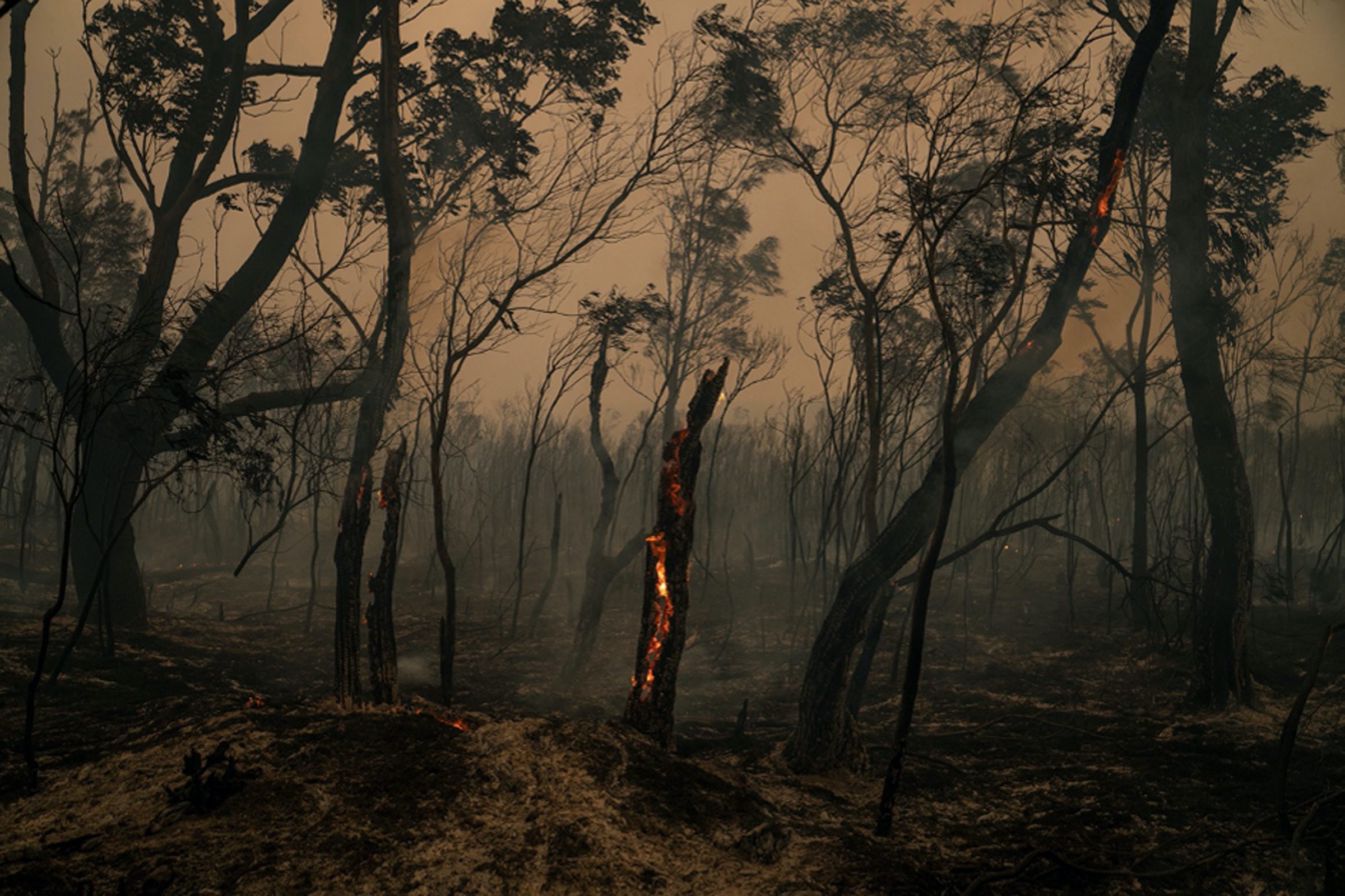
[2] Timothy Morton, Hyperobjects: Philosophy and Ecology after the End of the World (Minneapolis: University of Minnesota Press, 2013) 19. Morton’s emphasis.
